Marvel’s All-New All-Different Red Wolf #1, out today, has faced more scrutiny than most books slated for the publisher’s line-wide relaunch. Written by Nathan Edmondson and drawn by Dalibor Talajic, the book was criticized upon announcement due to the titular character’s design as seen in an All-New All-Different promotional image. In addition, following Marvel’s announcement of Edmondson as series writer, a number of prolific comics writers and journalists levied heavy allegations against Edmondson. While nothing has come of the accusations in the intervening months, the discussion surrounding them irreparably changed the dialogue surrounding the book into one focused on its production rather than its premise. Unfortunately, now that Red Wolf #1 is on shelves, it has proven itself to be unworthy of much discussion, anyways.
While a number of characters throughout Marvel’s history have carried the Red Wolf mantle, this version of the character evokes the one from Marvel’s 1872 Battleworld tie-in to Secret Wars. In that story, Red Wolf, a Cheyenne tribesman, interacted with a number of time-shifted Marvel characters including Tony Stark, Wilson Fisk, and Steve Rogers. After the death of Rogers on this alternate Earth, Red Wolf becomes the sheriff of Timely, a predominantly white settlement in the American heartland. Red is viewed with suspicion and disdain by the people he protects, and is blamed when a series of violent murders strikes the town with terror.
It is difficult to discuss Red Wolf #1 without revealing the twist that comes towards the end of the book, but most of the intrigue and actual plot movement comes from that shock ending. Prior to it, the issue proves itself to be languid, meandering in several different directions before getting to the core conceit that will likely drive the series moving forward. The team devotes several scenes to reiterating time and time again that Red Wolf and indigenous people as a whole are disliked by the settlers of Timely, but never tells the reader why the same townsfolk accept Red Wolf’s authority as sheriff or why Red Wolf would choose to protect people that are racist towards him.
In general, the characters feel more like underdeveloped stereotypes than real people. Ironically given the initial furor around the book, this is less true of Red Wolf himself than it is of the white townspeople of Timely. They take up a great deal of panel space, but get little to do beyond yelling racist epithets like “injun” and “savage” while fighting over cows because, you know, they are cowboys. On the other hand, one of the brightest spots of this book are Red Wolf and his mother. In an early fight with some feuding cattle ranchers, Talajic amply showcases Red Wolf’s physical prowess as he effortlessly takes down three armed men. Edmondson gives Red Wolf a chance to demonstrate his tracking skills, proving his Red Wolf is not only strong, but intelligent as well. Red Wolf’s mother is equally as fierce and perceptive, and a tender interaction between the two proves to be the most meaningful exchange of dialogue throughout the book, despite not moving the plot forward at all.
Some may say it is contradictory to praise a section of the book that contributes to its lack of momentum, but in truth there is a distinction between purposeless and purposeful wandering. As important as plot is, character is equally, if not more so. The exchange between Red Wolf and his mother amply develops both characters in a heartening way, helping the reader empathize with the lead character of the story. On the other hand, devoting four pages– about one-fifth of the book– to the opening fight scene between Red Wolf and the cattle ranchers does nothing for the plot and very little for Red Wolf’s character that could not have been showcased in half the time.
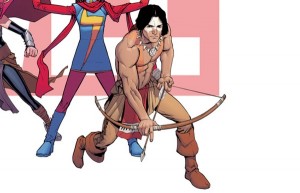
Credit where credit is due, Edmondson, Talajic, and Marvel’s editorial team appear to have taken the earlier criticism about Red Wolf’s character design to heart. Nary is there a hint of feathered headdresses or loincloths. Instead, Red is portrayed in western cowboy garb befitting of his role as Timely’s law enforcer. The warpaint on his face, evocative of a wolf, distinguishes him from the people he protects and showcases his Native American heritage. Colorist Miroslav Mrva employs a safe but effective coloring scheme, shading the western environment with a variety of fitting earth tones. Talajic’s scenic rendering is strong as well. He fills page after page with carefully rendered fauna, which contrast with the swirling dust clouds that are ubiquitous throughout the book.
Unfortunately though, even Talajic’s art falters throughout the book. In one scene, a character dies to an unseen threat, with Red Wolf stumbling upon the character’s body seconds after the crime has been committed. While Talajic’s intent was likely to present the scene in a manner that prevents the reader from seeing the villain, he also fails to show us the state of the victim. Red Wolf is depicted as staring a puddle of blood belonging to the victim, but the reader does not get a glimpse of any part of the victim’s body until the next page, leaving him or her confused and disoriented. A prone hand positioned in the pool of blood could have built suspense and maintained mystery equally as well while simultaneously improving the reader’s sense of understanding.
Ultimately, Red Wolf #1 is a victim of shallow character development and extreme decompression. By not showing its hand until the final pages of the story, what readers are left with is an issue #0 that could have easily been edited down to eight pages and given away inside of an All-New All-Different Marvel sampler. The premise presented at the end of the issue has potential. Unfortunately though, it is hard to recommend that readers stick with this title in the hopes that Edmondson and Talajic will ramp up Red Wolf‘s momentum in the months to come when it is much easier to sing the praises any number of other comics’ debut issues, even other All-New All-Different #1s, which showcase more depth and energy than Red Wolf #1 right off the bat.
Red Wolf #1 is not offensive in the way that readers were expecting. It is simply boring, but that is offense enough.


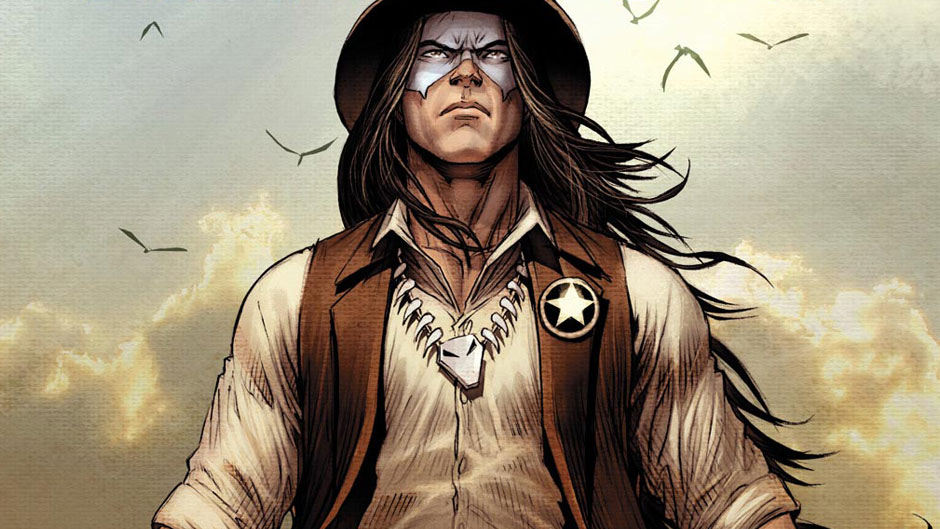
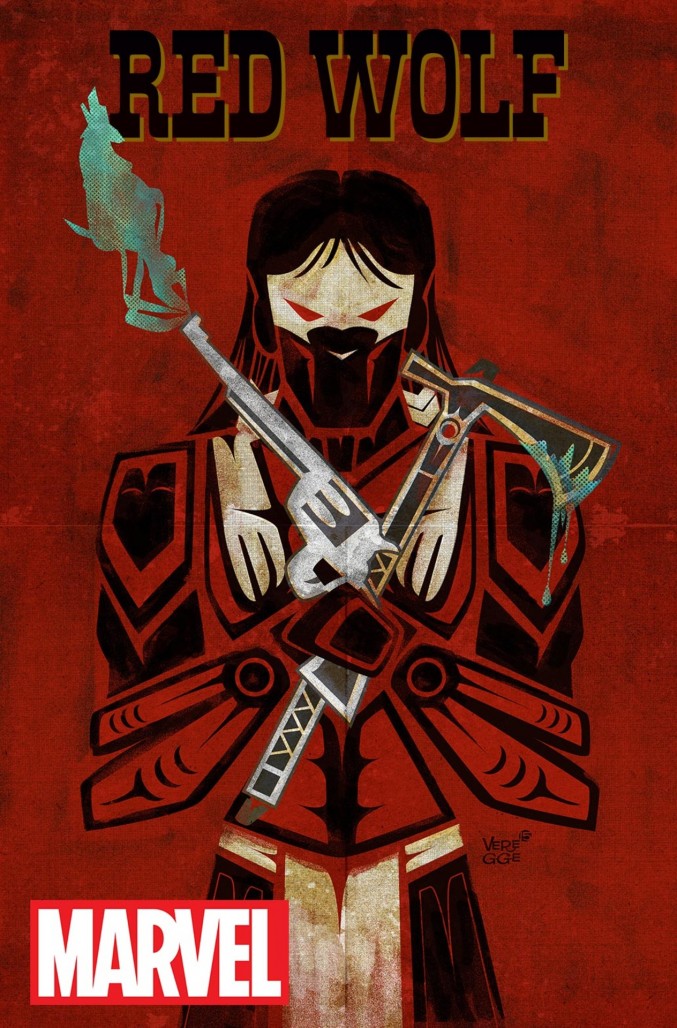
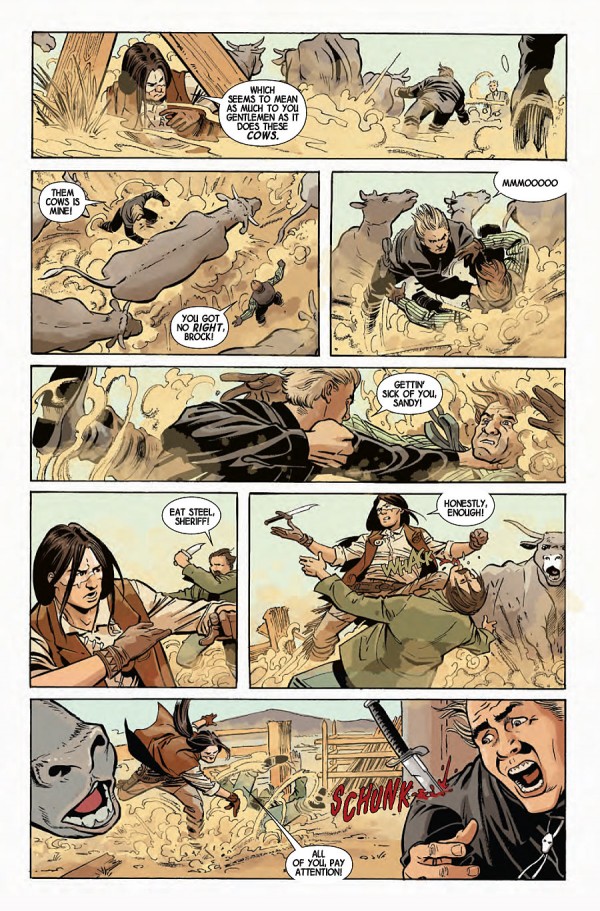
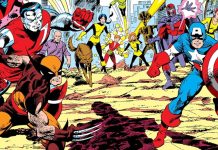




B…but… CBR gave it 4.5 out of 5 stars! Now I don’t know what to believe!!!
The 2 “Last Days” issues of “Punisher make Dick Cheney look like a liberal. It was full-blown neocon bomb-all-the-savages b.s. The irony is that Edmonson is a huge war-loving neocon who for some reason hasn’t been willing to demonstrate his claimed patriotism by enlisting in the military. I guess like most neocon’s his age, Nathan has been backed up on personal chores this past decade. He’ll get to proving his warrior nature after he is done cleaning his DVR of backed up episodes of “Real Housewives.”
He’s a piece of shit writer, as well. Not just a cowardly armchair General, but a shitty writer!
Yeah! He needs to realize he isn’t allowed to not be liberal!
And Magic Wind is unreviewed and unloved by all…
I thoroughly enjoyed Red Wolf #1 and 2. I liked the slower pace of the first issue. The flaws noted above are tenable, but it seemed like the theme of “making peace” was what governed the story-telling. It felt authentic to me, like it was being told by a wise Native American.
Thanks Pedro for mentioning Magic Wind,. I read up on it and will get some copies.
Comments are closed.